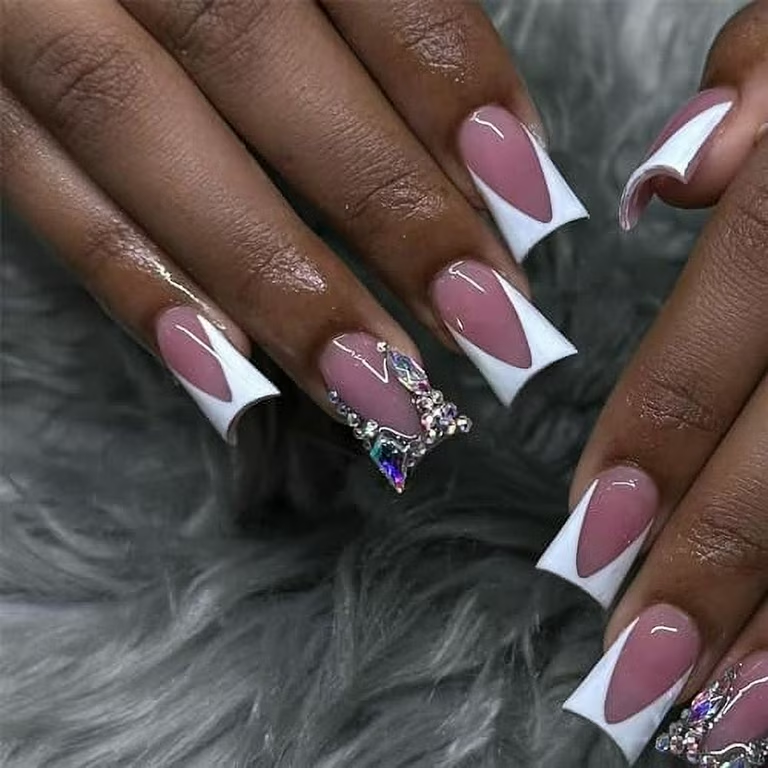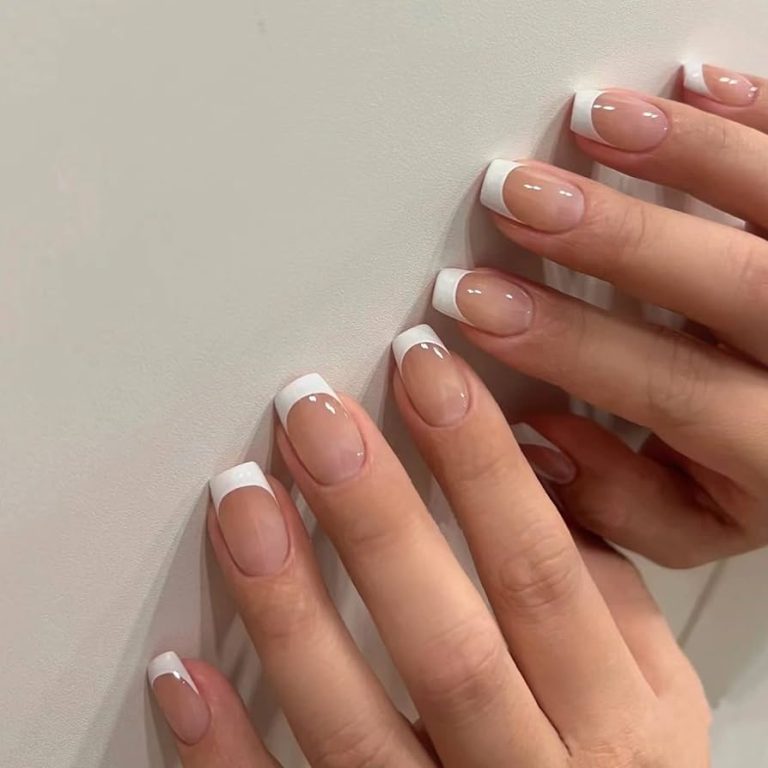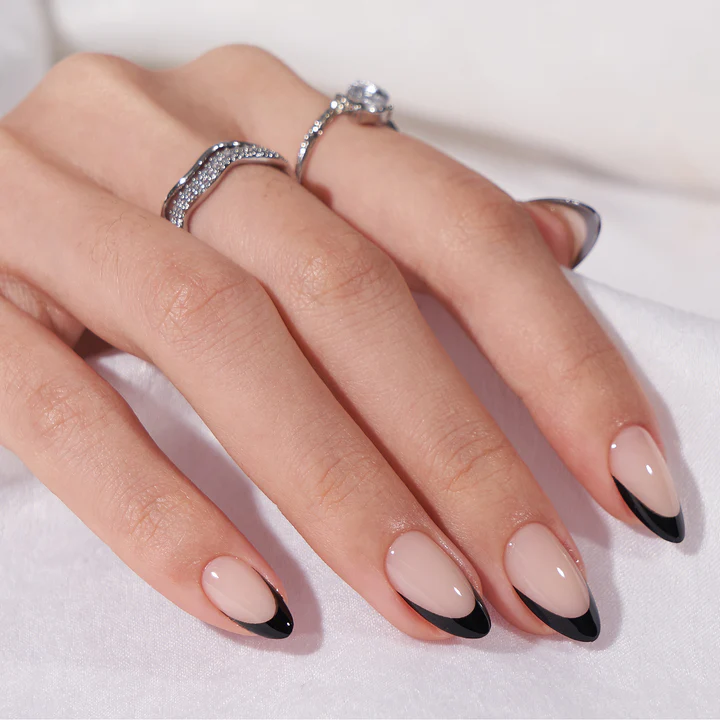
Duck Nails: A Deep Dive into Flared Manicures
The Rise of Duck Nails
Duck nails, also known as flared nails or fan tips, have taken the beauty world by storm. This unconventional nail style features a wide, flared tip that resembles a duck’s foot, hence the name. The trend gained traction on social media platforms, particularly TikTok and Instagram, where bold and unique beauty choices thrive. Nail enthusiasts and celebrities alike have embraced this eye-catching style, sparking both admiration and debate. Duck nails challenge traditional nail aesthetics, pushing the boundaries of nail art and self-expression.
The exaggerated shape allows for expansive nail art designs, providing a larger canvas for intricate patterns and embellishments. Despite their polarizing nature, duck nails have carved out a significant niche in the nail fashion industry. Proponents of the style praise its ability to make a statement and stand out from conventional manicures. Critics, however, question the practicality and longevity of such an extreme nail shape. Regardless of personal opinions, duck nails have undeniably made their mark on contemporary beauty trends, inspiring creativity and sparking conversations about nail art norms.

The History and Evolution of Nail Shapes
Nail shapes have evolved significantly over time, reflecting changing fashion trends and cultural influences. Ancient Egyptians pioneered nail care, with longer nails signifying high social status. The concept of shaping nails gained popularity in the 19th century, with the introduction of metal nail files. The 20th century saw a rapid evolution in nail shapes, from the rounded nails of the 1920s to the square tips of the 1950s. The 1970s introduced the iconic stiletto nail, paving the way for more dramatic shapes. The 1980s and 1990s favored square and squoval (square-oval) shapes, emphasizing practicality and clean lines.
The new millennium brought a resurgence of pointed shapes, with the almond and coffin styles gaining popularity. This trend towards more dramatic nail shapes set the stage for the emergence of duck nails. The flared style represents a natural progression in the ever-changing landscape of nail fashion. As nail technology advanced, allowing for stronger and more durable extensions, more extreme shapes became possible. Duck nails emerged as a bold statement in a world where nail art had already pushed many boundaries. This evolution demonstrates the cyclical nature of beauty trends and the constant desire for innovation in personal expression.
The Anatomy of Duck Nails
Duck nails possess a distinctive structure that sets them apart from other nail shapes. The base of the nail starts narrow, typically following the natural width of the nail bed. As the nail extends outward, it dramatically flares to create a wide, fan-like tip. This flared edge can range from subtle to extreme, depending on personal preference and nail technician expertise. The creation of duck nails often involves artificial nail extensions, as the natural nail rarely grows into this shape. Acrylic or gel extensions provide the necessary structure and strength to maintain the flared form.
Nail technicians carefully sculpt the shape, ensuring balance and symmetry across all fingers. The wide tips of duck nails offer an expansive surface area for nail art, allowing for intricate designs and embellishments. Many enthusiasts opt for bold colors, patterns, and 3D decorations to enhance the dramatic effect of the shape. The underside of duck nails often requires special attention to ensure comfort and wearability. Skilled technicians carefully thin out the underside to prevent a heavy or bulky feeling. Despite their exaggerated appearance, well-crafted duck nails should feel relatively comfortable and secure when properly applied.

Techniques for Creating Duck Nails
Crafting the perfect set of duck nails requires skill, precision, and specialized techniques. Nail technicians typically start with a thorough nail prep, including cleaning, shaping the natural nail, and applying a base coat. For artificial duck nails, technicians often use forms or tips to extend the nail beyond the natural edge. Acrylic powder and liquid monomer or hard gel provide the structure needed to create the flared shape. The nail technician carefully builds up the extension, focusing on creating a smooth transition from the natural nail to the flared tip.
Shaping the flare requires expertise, as the technician must balance the width and angle to achieve an aesthetically pleasing result. After achieving the desired shape, the nails undergo filing and buffing to smooth out any imperfections. Many technicians use an e-file (electric nail file) for precision in shaping the dramatic flare. Once the structure is complete, the nails are ready for color application and art. Gel polish often works well on duck nails due to its durability and high-shine finish. The wide, flat surface of the flared tips allows for creative freedom in nail art designs. Technicians may use various techniques such as hand-painting, stamping, or applying 3D elements to decorate the nails. The final step involves applying a top coat to seal the design and add extra shine and protection.
Popular Designs and Embellishments for Duck Nails
The expansive surface area of duck nails provides an ideal canvas for elaborate nail art designs. Nail artists and enthusiasts have embraced this opportunity, creating a wide array of eye-catching styles. Ombre effects work particularly well on duck nails, with colors blending seamlessly across the flared tips. Glitter and holographic finishes add extra drama, catching the light and enhancing the nails’ unique shape. Many duck nail aficionados opt for bold, contrasting patterns such as animal prints, geometric designs, or tropical motifs. The extra space allows for intricate details that might be challenging on smaller nail shapes.
3D embellishments have become a staple of duck nail art, with artists adding crystals, charms, and even small figurines to create miniature sculptures on each nail. Some popular themes include kawaii characters, fantasy creatures, and pop culture references. Negative space designs offer a modern twist, incorporating the natural nail or a neutral base color into the overall pattern. French tips get a makeover on duck nails, with artists experimenting with curved, zigzag, or asymmetrical lines to accentuate the flared shape. Seasonal designs flourish on duck nails, from pastel flowers for spring to spooky motifs for Halloween. The sheer size of duck nails allows for storytelling through nail art, with each nail potentially featuring a different scene or character.

Pros and Cons of Duck Nails
Like any fashion trend, duck nails come with their own set of advantages and drawbacks. On the positive side, duck nails offer unparalleled creative freedom for nail art. The wide, flat surface provides ample space for intricate designs, 3D embellishments, and bold patterns. This makes them an ideal choice for those who view their nails as a form of self-expression or wearable art. Duck nails also make a strong fashion statement, instantly drawing attention and sparking conversation.
For individuals who enjoy standing out and pushing style boundaries, duck nails offer a unique way to express personality through beauty choices. Additionally, the trend has created new opportunities for nail technicians to showcase their skills and artistry. However, duck nails also present several challenges. The extreme shape can be impractical for daily activities, potentially interfering with typing, texting, or handling small objects.
The width of the nails may also make them prone to catching on clothing or hair. Maintenance can be more demanding compared to traditional nail shapes, often requiring more frequent salon visits for repairs or adjustments. The dramatic flare may not suit all personal styles or professional environments, limiting their wearability for some individuals. From a health perspective, the weight and structure of duck nails could potentially stress the natural nail and surrounding skin if not applied and maintained properly. Despite these drawbacks, many enthusiasts find the unique aesthetic of duck nails worth the extra effort and attention they require.
Maintenance and Care for Duck Nails
Proper maintenance is crucial for keeping duck nails looking their best and preventing damage to the natural nails. Due to their unique shape, duck nails may require more frequent touch-ups than traditional manicures. Wearers should schedule regular appointments with their nail technician, typically every two to three weeks, to address growth at the base and any lifting or chipping at the tips. At home, gentle care can help prolong the life of duck nails.
Using cuticle oil daily keeps the skin around the nails hydrated and healthy, preventing painful cracks or tears. Wearing gloves during household chores protects the nails from water damage and harsh chemicals. When applying hand lotion, taking extra care to work the product around the flared tips helps maintain the overall appearance of the manicure. Avoiding excessive force or using the nails as tools prevents breakage and lifts.
If a nail does break or lift, it’s important to seek professional repair promptly to prevent further damage or infection. Some wearers find it helpful to carry a small nail repair kit for minor fixes on the go. While the shape of duck nails may take some getting used to, many enthusiasts develop techniques for navigating daily tasks without damaging their manicure. With proper care and attention, duck nails can remain attractive and intact for several weeks, allowing wearers to fully enjoy their bold nail art choices.

DIY Duck Nails: Tips and Precautions
While professional application is recommended for the best results, some nail enthusiasts attempt DIY duck nails at home. Those brave enough to try should start with a good quality nail extension kit designed for sculpting. Practice on fake nails or nail tips before attempting the technique on natural nails. Begin by applying a nail form or tip to extend the nail. Carefully build up the acrylic or gel, focusing on creating a smooth transition from the natural nail to the flared tip.
Shaping the flare requires patience and a steady hand. Use a coarse nail file to rough out the shape, then refine with finer grit files. An e-file can help achieve a smoother result but requires practice to use safely. After achieving the desired shape, apply gel polish or regular nail polish for color. When attempting nail art, start with simple designs and gradually work up to more complex patterns. However, DIY enthusiasts should be aware of potential risks.
Improper application can lead to nail damage, infections, or allergic reactions. Without proper training, it’s easy to create nails that are too thick or heavy, causing discomfort or even pain. The removal process for duck nails can be particularly challenging and may damage the natural nail if not done correctly. For these reasons, many experts advise leaving duck nails to the professionals. Those determined to try at home should research thoroughly, invest in quality products, and be prepared to remove the nails if any signs of damage or irritation occur.
The Future of Duck Nail: Trend or Lasting Style?
As with many bold fashion trends, the longevity of duck nail in the mainstream beauty world remains uncertain. Some industry experts predict that the extreme nature of the style will relegate it to a short-lived fad, while others see potential for duck nails to evolve and persist in various forms. The trend has already inspired variations, such as the more subtle “flare” nails that offer a toned-down version of the duck nail shape. This adaptability suggests that elements of the style may continue to influence nail fashion even as the most dramatic versions fade from popularity.
The impact of duck nail on nail art techniques and creativity is likely to have a lasting effect. The trend has pushed the boundaries of what’s possible in nail design, encouraging artists to think beyond traditional shapes and sizes. This innovative spirit may continue to drive new trends in the nail industry. Social media will play a crucial role in the future of duck nail. As long as the style generates engagement and discussion online, it’s likely to maintain a presence in beauty conversations.
However, the cyclical nature of fashion suggests that more subtle nail trends may eventually overshadow the boldness of duck nail. Regardless of their long-term status, duck nails have left an indelible mark on nail fashion history. They represent a moment of extreme creativity and self-expression in beauty culture, challenging norms and inspiring passionate debates about style, practicality, and personal choice in nail aesthetics.

